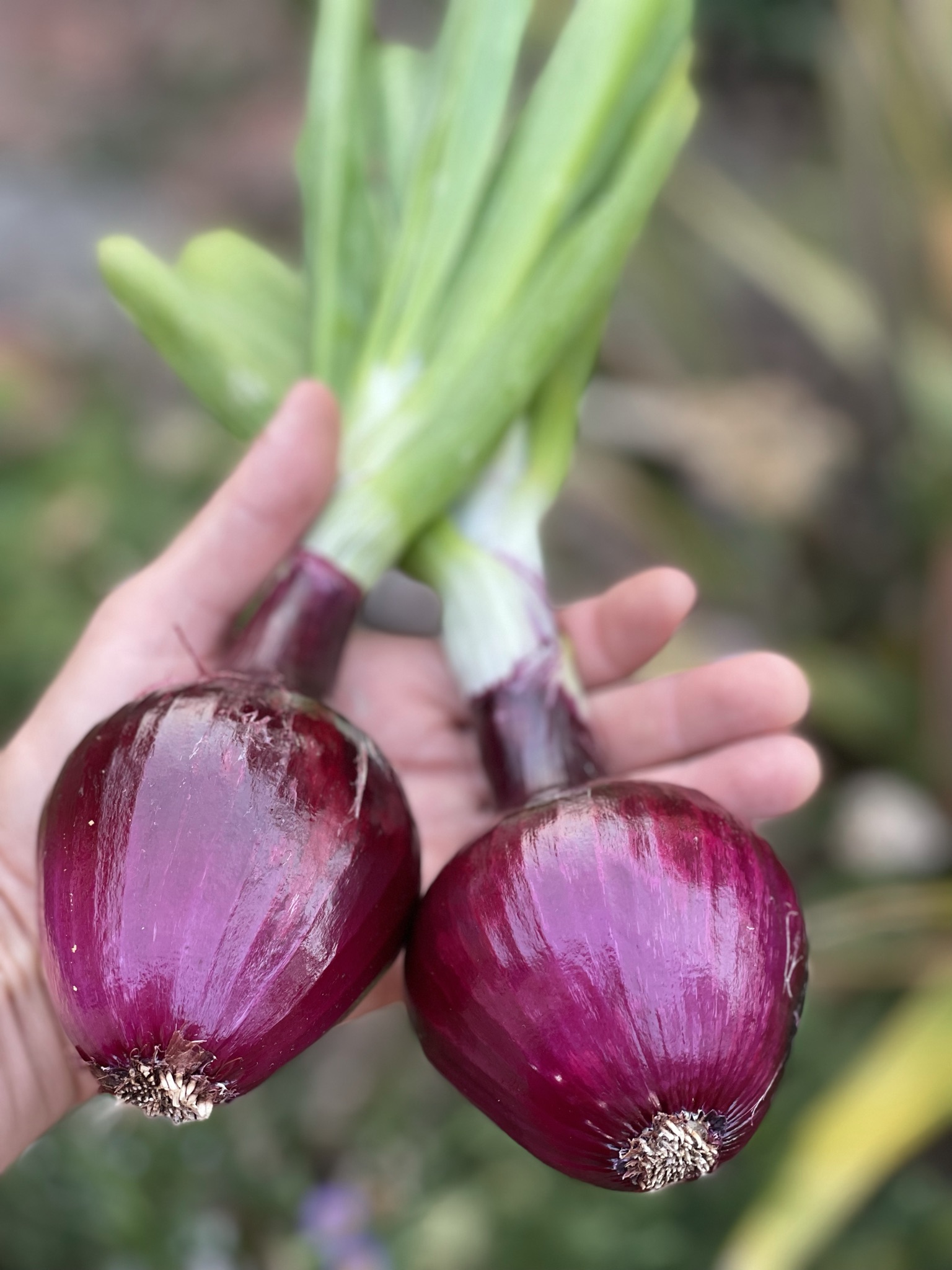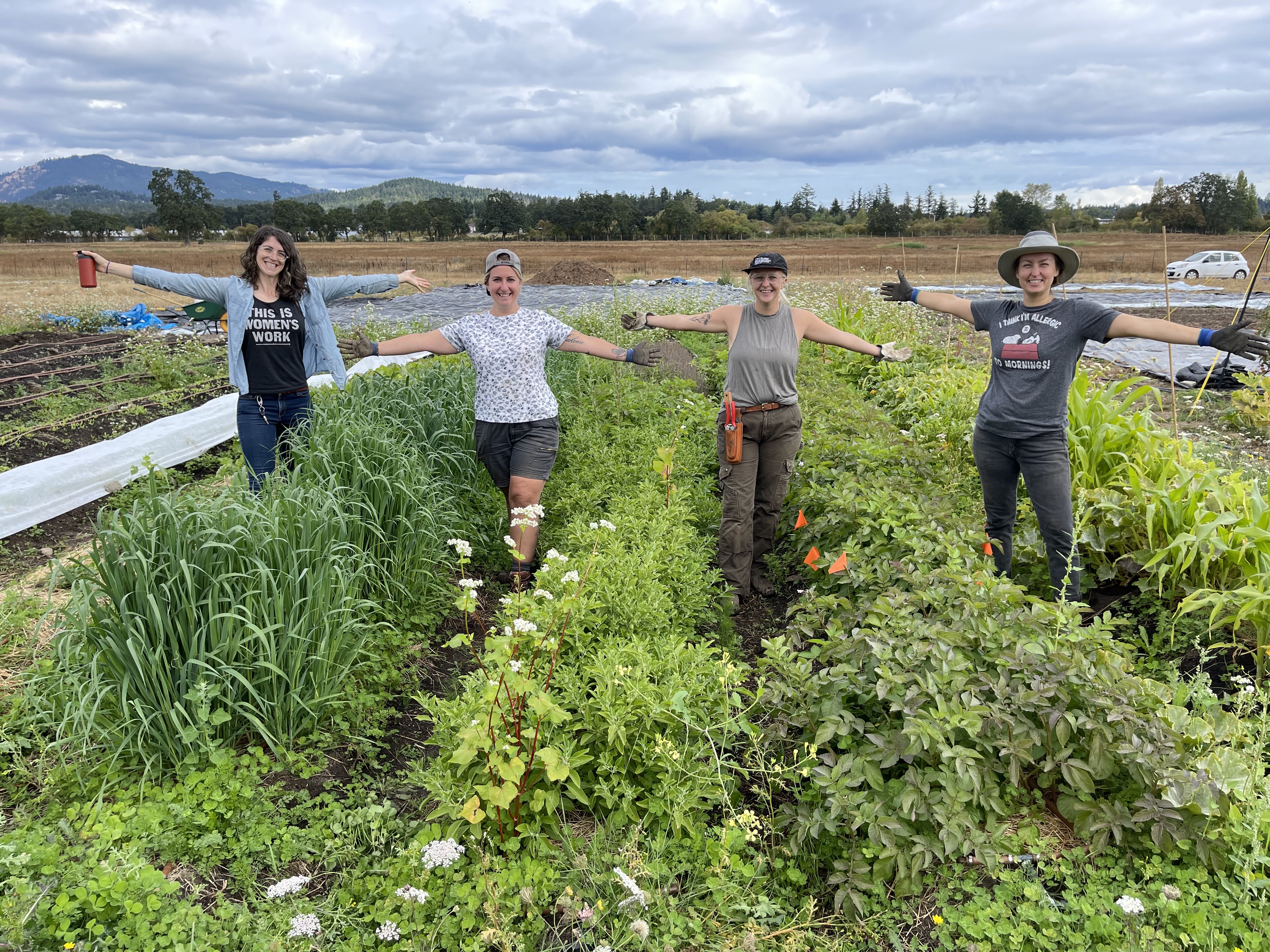Edible Notables: Sandown Centre
Change and development take time, and in the case of Sandown Centre, the process began 12 years ago. The hub of regenerative agriculture is situated on land that used to be a privately owned horse racing track. But when the Randells, who owned the land, decided it was time to sell, the North Saanich District recognized the unique opportunity the land presented. The District worked with the Randell family to turn a small portion of the land into an industrial area, while the remaining 83-acre parcel of farmland was developed based on the community’s desire to see it used for food production, biodiversity, teaching and learning.
“That really set the stage for the current Sandown Centre that we’re working on today,” says Jen Rashleigh. Born and raised in Vancouver, she frequently visited her grandparents in North Saanich, and during one such summer visit, she discovered a Vision Sandown info booth. “They had these sticky notes and were asking for public suggestions on what could happen at Sandown. I remember covering the map with yellow squares and laughing at my own enthusiasm.” The enthusiasm ultimately led to her leaving her job running Farmers on 57th in Vancouver, which is considered “an example of best practice in community-integrated farming by the city.” It was a tough decision to leave the project she had founded and run for over a decade, but the opportunity to build Sandown Centre was a new dream she couldn’t pass up.
“She started it all,” says Lindsey Boyle, Sandown Centre’s board president. But Jen didn’t do it on her own; Lindsey’s business background and 20-year career in market insight and innovation strategy gave her experience in imagining ideas and creating launch strategies. “In 2018, I felt a growing, pressing urgency to do something significant to address the climate change, biodiversity loss and waste crisis,” she says. Then she met Jen and heard about the idea for the Sandown Centre. The significance of the idea was not lost on Lindsey, and she immediately jumped at the opportunity to be involved.
Of course, all the ideas and enthusiasm in the world are useless if they’re not put into practice, and that’s where Steve Duck comes in. “He has been instrumental in building the structure and operations of the Sandown Centre, which is the expertise he offers through the TIDES Group,” explains Jen. “That’s what he does—he empowers organizations to grow and thrive.” Steve is incredibly resourceful, and can organize a theatre production as well as he can facilitate a board meeting—“and he knows everyone!” He previously ran bicycle tours in Italy for ten years, so he brings an on-the-ground appreciation for the value rich agri-tourism can bring to a region.
Together, the trio desires Sandown Centre to be “a centre for inspiration, best practices and knowledge building in regenerative agriculture.” Jen acknowledges that “regenerative” is a word the general public might not fully grasp yet, but their goal is to make it a household concept. “The easiest way to explain regenerative agriculture is that it is food growing that is good for the soil, good for your tastebuds, good for your gut, and good for the future,” she explains.


In other words, regenerative agriculture is based on the idea of feeding the soil so that the soil feeds us. Jen says that “this means growing food in a way that also considers, and stewards the natural systems on the land. It means never leaving the soil bare. It means mowing and cover cropping rather than tilling. It means recognising, working with, and enhancing the soil biology. It means working respectfully with livestock to bring added nutrition and mowing services to the land.”
They’ve fostered strong partnerships to help them achieve this goal. The University of Victoria has been connected to the project since its early days and have launched an Ecogastronomy lab. They work together as they take on PhD candidates who study soil health and regenerative agriculture and centre their research at Sandown. One such candidate is Matthew Kyriakides, who is doing his PhD on building soil health. “He’s worked with farmers and soils in Iceland, the Netherlands, across Canada and on various farms on the Peninsula,” explains Jen.
He’s now taking the lead on their overall site management plan. And Brooke Hayes, who has experience working both as a biochemist as well as in the government, is now doing her PhD in soil science and is joining Sandown to build out their Sandown Soil Lab. She is passionate about the connection between soil health, farmer health and climate change solutions.
Then there’s Jenn Cline, who is their Lead Farm Mentor. “She was a chef for 7 years before she swapped out her chef knife for farm tools.” And finally, there are the Farmpreneurs, “a cohort of emerging regenerative growers who are working the land and launching businesses in the soils of Sandown.” Twenty-eight applicants brought their business ideas and explained the market niche they wanted to focus on when they applied for the program in December, and seven of them were selected to become a part of Sandown.
 It’s exciting to see the plans for the centre come to fruition after so many years. “A long-time resident who has been part of this 12-year conversation wrote me an email just yesterday. She talked about the experience of seeing the Sandown Farmpreneurs with their laden market table at the North Saanich Farm Market. Seeing those Farmpreneurs launch, and their bounty of produce grown in the Sandown soils was a pretty overwhelming experience for her,” says Jen.
It’s exciting to see the plans for the centre come to fruition after so many years. “A long-time resident who has been part of this 12-year conversation wrote me an email just yesterday. She talked about the experience of seeing the Sandown Farmpreneurs with their laden market table at the North Saanich Farm Market. Seeing those Farmpreneurs launch, and their bounty of produce grown in the Sandown soils was a pretty overwhelming experience for her,” says Jen.
The Sandown Centre also runs public programs to help the community connect with the land. In August, they ran “Sandown Saturdays,” which was a land walk hosted by a different person each week. This provided guests with the opportunity to hear a different perspective of the area and gave them a chance to connect with the Farmpreneurs and explore the natural history of Sandown. They’ve also started the Sandown Community Gardens and are excited to see the community come out and grow their own food as well.
Sandown Centre’s North Saanich location is the perfect place for this kind of big dream to turn to reality, with its close proximity to Victoria, the ferry terminal and international airport, while still being a land of country roads and farmland. They have residents who care about food and the future and work hard to preserve the health of the community. But the very best part of Sandown Centre is the land itself. As Jen so aptly puts it, “It is a place where you feel the connections and the abundance.”

The Edible Notables Series is proudly sponsored by Beacon Law Centre.






